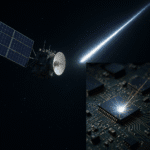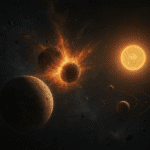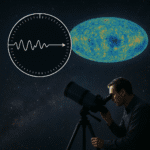The pursuit to determine the universe’s age combines observational precision with theoretical insight. Astronomers rely on multiple independent techniques to cross-check results and refine their estimates. This article explores the primary methods used to piece together the timeline of cosmic history and understand how scientists arrive at a figure roughly 13.8 billion years.
Observing the Afterglow of Creation
Decoding the Primordial Light
One of the most powerful tools for measuring cosmic age is the cosmic microwave background (CMB), the faint radiation left over from the Big Bang. Discovered in 1965, the CMB is a remarkably uniform glow that bathes the entire sky at a temperature of about 2.7 Kelvin. Tiny fluctuations in its temperature and polarization carry the imprint of density variations in the early universe, which later grew into galaxies and clusters.
Satellites such as COBE, WMAP and Planck have mapped these anisotropies with exquisite sensitivity. By analyzing the size and amplitude of the hot and cold spots, researchers can extract key cosmological parameters. In particular, the angular scale of the first acoustic peak in the power spectrum directly constrains the geometry of space and the expansion rate at the time the CMB was emitted, around 380,000 years after the Big Bang.
- Temperature fluctuations reveal the density of matter and radiation.
- Polarization patterns distinguish between scalar and tensor perturbations.
- Acoustic peaks encode the baryon-to-photon ratio and dark matter content.
Combining these observations with models of cosmic evolution yields a precise value for the Hubble parameter at recombination, which can be extrapolated to today using well-established physics. This approach has become a cornerstone in modern cosmology, providing an age estimate with percent-level precision.
Measuring the Expansion History
Unraveling Redshift and Distance
The universe is expanding, and by quantifying that expansion we can trace its history backward to an origin point. The pioneering work by Edwin Hubble in the 1920s established that galaxies recede from us at speeds proportional to their distance, a relation now formalized as the Hubble constant (H₀). Modern determinations of H₀ employ multiple distance indicators and redshift surveys.
Redshift measures the stretching of light as space itself expands. If a galaxy’s spectrum shows its emission lines shifted toward longer wavelengths, astronomers calculate its recession velocity. To convert that velocity into a distance, one must build a reliable “cosmic distance ladder.” The first rungs use parallax for nearby stars, then Cepheid variable stars, and finally Type Ia supernovae as standard candles in distant galaxies. This chain of calibrations comprises the cosmic distance ladder.
Recent campaigns such as the SH0ES (Supernova H₀ for the Equation of State) project have refined Cepheid and supernova measurements, arriving at H₀ values around 74 km/s/Mpc. Meanwhile, independent techniques using gravitational lensing time delays and baryon acoustic oscillations yield slightly lower figures near 67 km/s/Mpc. The tension between these values sparks ongoing debate and may hint at new physics beyond the standard model.
By integrating H₀ with measurements of the matter density and dark energy content, cosmologists can solve the Friedmann equations backward in time. This yields an estimate for the age of the universe that is consistent with CMB results, reinforcing confidence in the overall framework.
Ancient Stellar Clocks
Dating the Oldest Stars and Clusters
While cosmic microwave background and expansion methods probe the universe on its largest scales, stellar astrophysics offers a complementary approach at the scale of individual stars and clusters. The oldest known groups of stars, the globular clusters, orbit the Milky Way’s halo and exhibit ages comparable to the universe itself. By constructing color-magnitude diagrams for these clusters, astronomers identify the “turn-off” point where stars exhaust hydrogen in their cores and leave the main sequence.
The position of the turn-off is sensitive to stellar mass and composition. Detailed models of stellar evolution, calibrated by observations of local stars and clusters, allow precise age determinations. Typical globular clusters yield ages between 11 and 13 billion years, setting a lower limit on the universe’s age.
Another stellar method involves white dwarf cooling. White dwarfs are the dead remnants of low-mass stars that gradually radiate away their remaining heat. By constructing a luminosity function of white dwarfs in clusters or the Galactic disk, astronomers infer the time elapsed since the first white dwarfs formed. This cooling age typically aligns with globular cluster estimates, adding robustness to the overall picture.
Nuclear and Radioactive Chronometers
Tracing Heavy Elements
Nucleocosmochronology leverages the decay of long-lived radionuclides to date the epoch of heavy element formation. Certain isotopes, such as uranium-238 and thorium-232, have half-lives comparable to the age of the universe. By measuring their abundance ratios relative to stable r-process elements in old, metal-poor stars, astronomers estimate when those isotopes were synthesized in supernovae or neutron star mergers.
Detailed spectroscopic studies of ancient halo stars reveal uranium and thorium lines, allowing chemical dating that yields ages around 13 to 14 billion years. Although uncertainties in nuclear reaction rates and initial production ratios introduce systematic errors, nucleocosmochronology provides an independent chronometer that supports other approaches.
Theoretical Frameworks and Dark Energy
Refining Cosmological Models
All observational techniques rest upon underlying cosmological models that describe how the universe evolves under gravity, radiation pressure, and the mysterious force known as dark energy. The standard ΛCDM model incorporates cold dark matter and a cosmological constant (Λ) to account for the accelerated expansion discovered in the late 1990s.
By fitting CMB data, supernova distances, baryon acoustic oscillations, and galaxy clustering within ΛCDM, cosmologists derive a consistent parameter set with an age of 13.8 billion years. N-body simulations and hydrodynamic codes test whether this model reproduces the large-scale structure and galaxy formation history observed today.
Future missions, such as the James Webb Space Telescope and Euclid, will push these tests to higher precision by examining the first galaxies and mapping weak gravitational lensing across cosmic time. Any deviation from ΛCDM predictions could prompt revisions to the age estimate or reveal new insights about the early universe.
Synergy and Ongoing Challenges
Reconciling Discrepant Measurements
Despite impressive progress, minor tensions remain between different age estimates. The disparity between local H₀ measurements and CMB-inferred values suggests the possibility of previously unknown physics or unrecognized systematic errors. Researchers are exploring hypotheses ranging from evolving dark energy to additional relativistic particles in the early universe.
Ongoing improvements in instrumentation, data analysis, and theoretical modeling promise to refine the universe’s age with even greater accuracy. The synergy among CMB studies, expansion history probes, stellar chronometers, and nuclear clocks ensures that multiple lines of evidence converge on a coherent timeline.
Ultimately, measuring the age of the universe is an exercise in cross-disciplinary collaboration. By combining insights from observational astronomy, nuclear physics, and general relativity, scientists continue to unveil the story of cosmic origins, pushing the frontier of human knowledge and our place within the grand cosmic tapestry.










